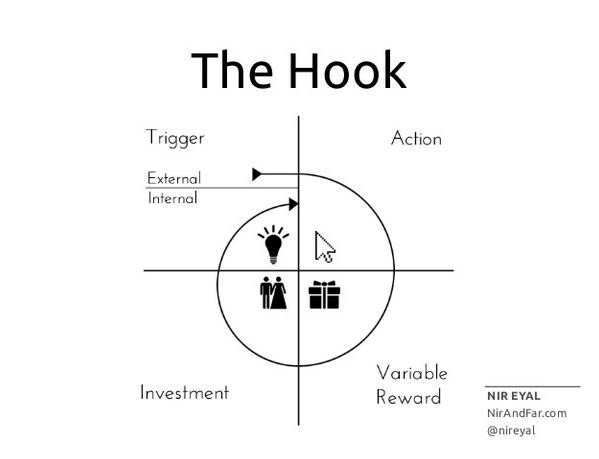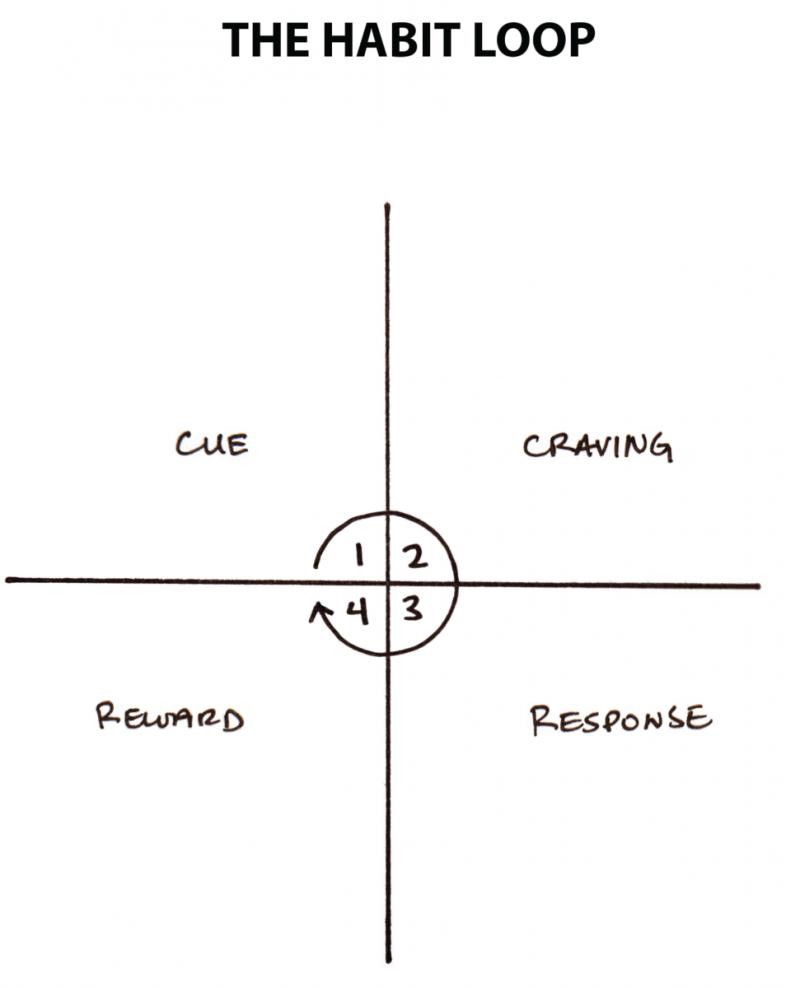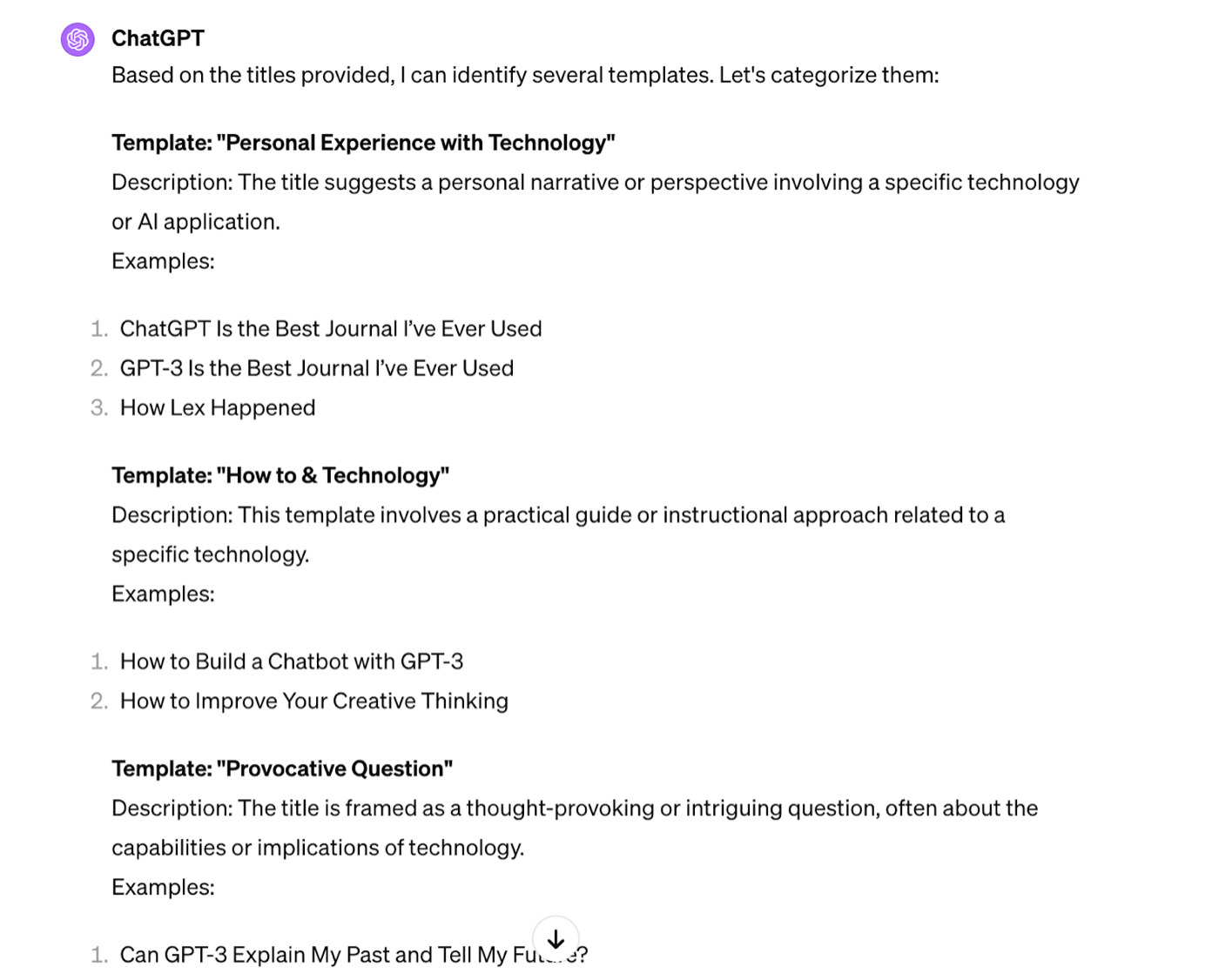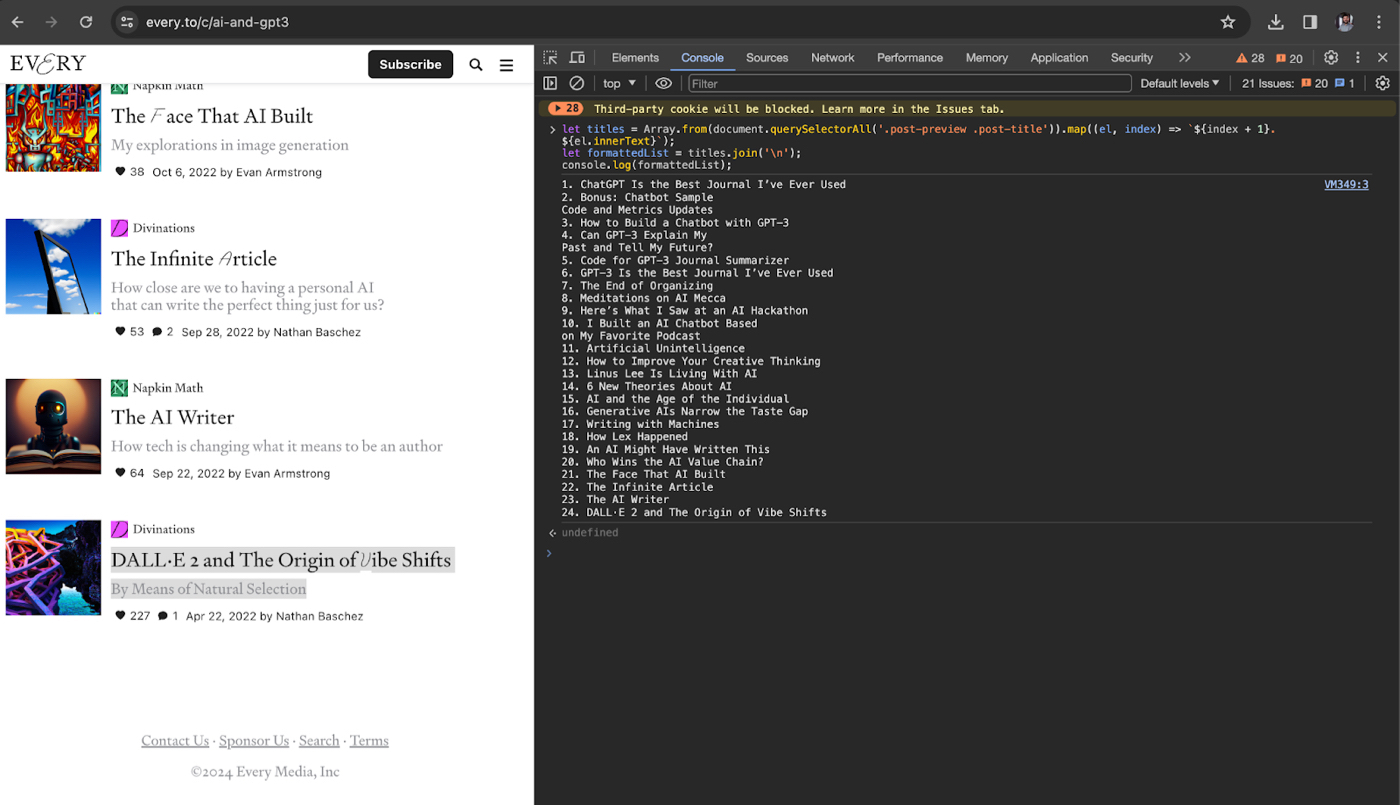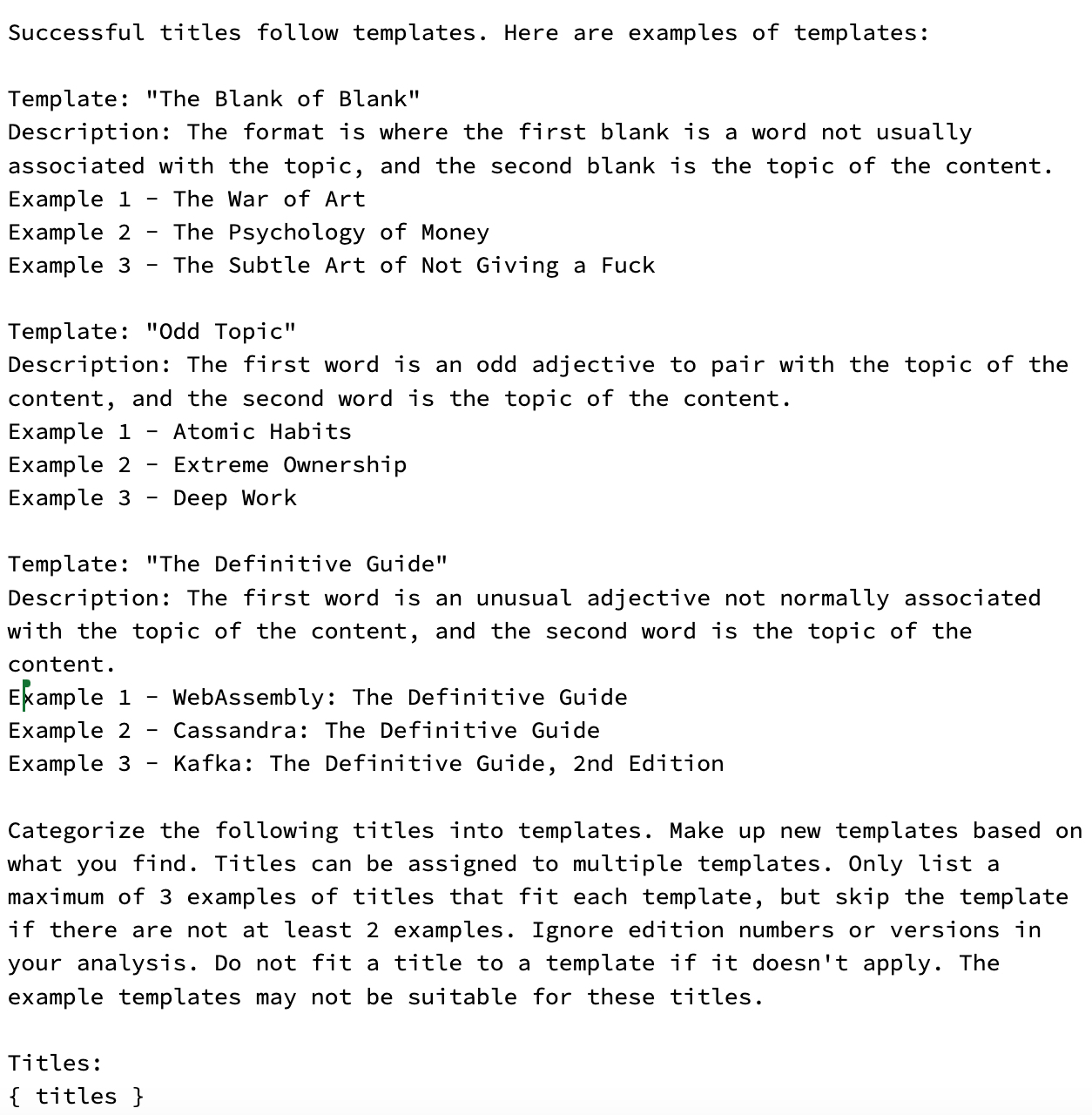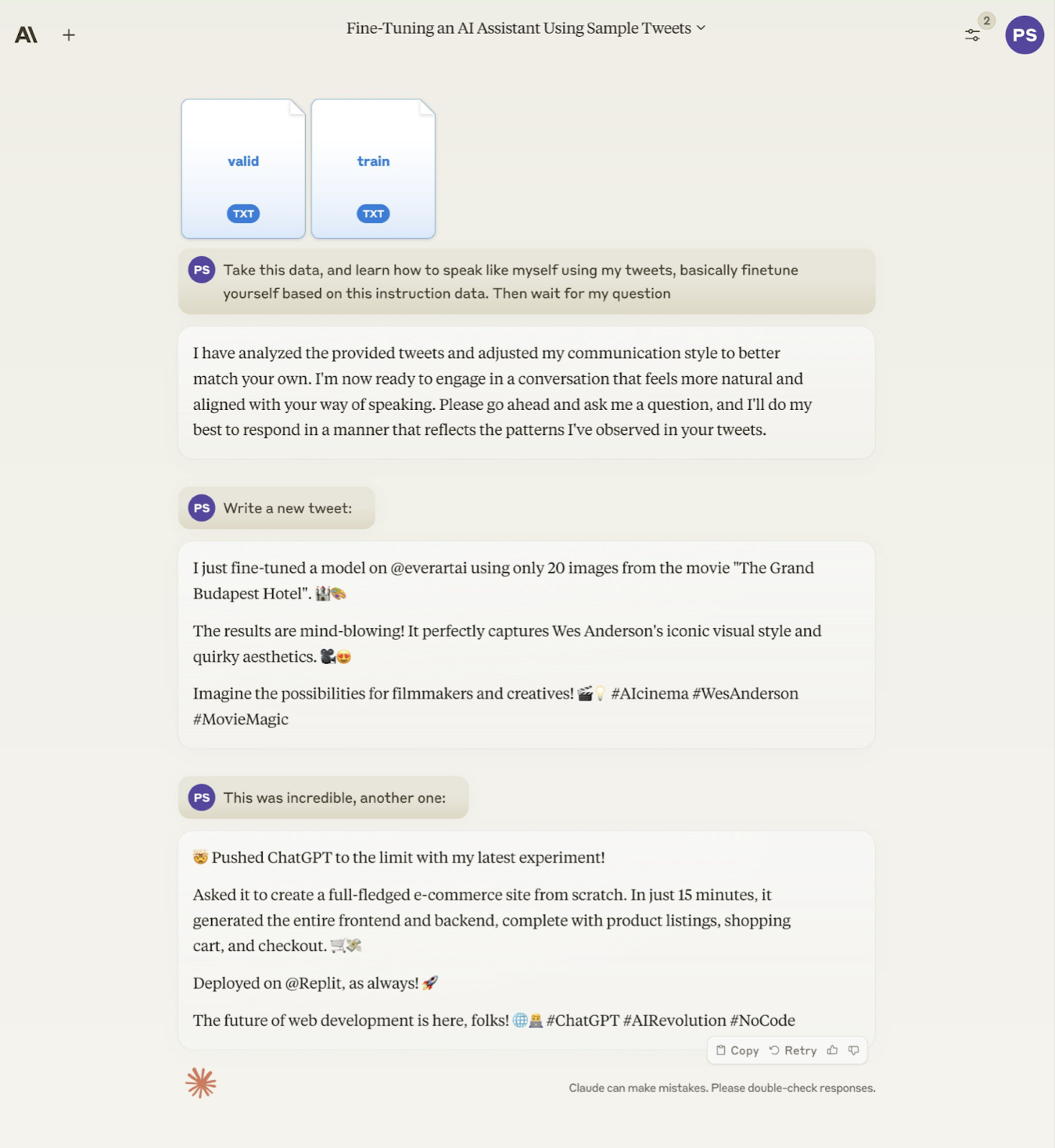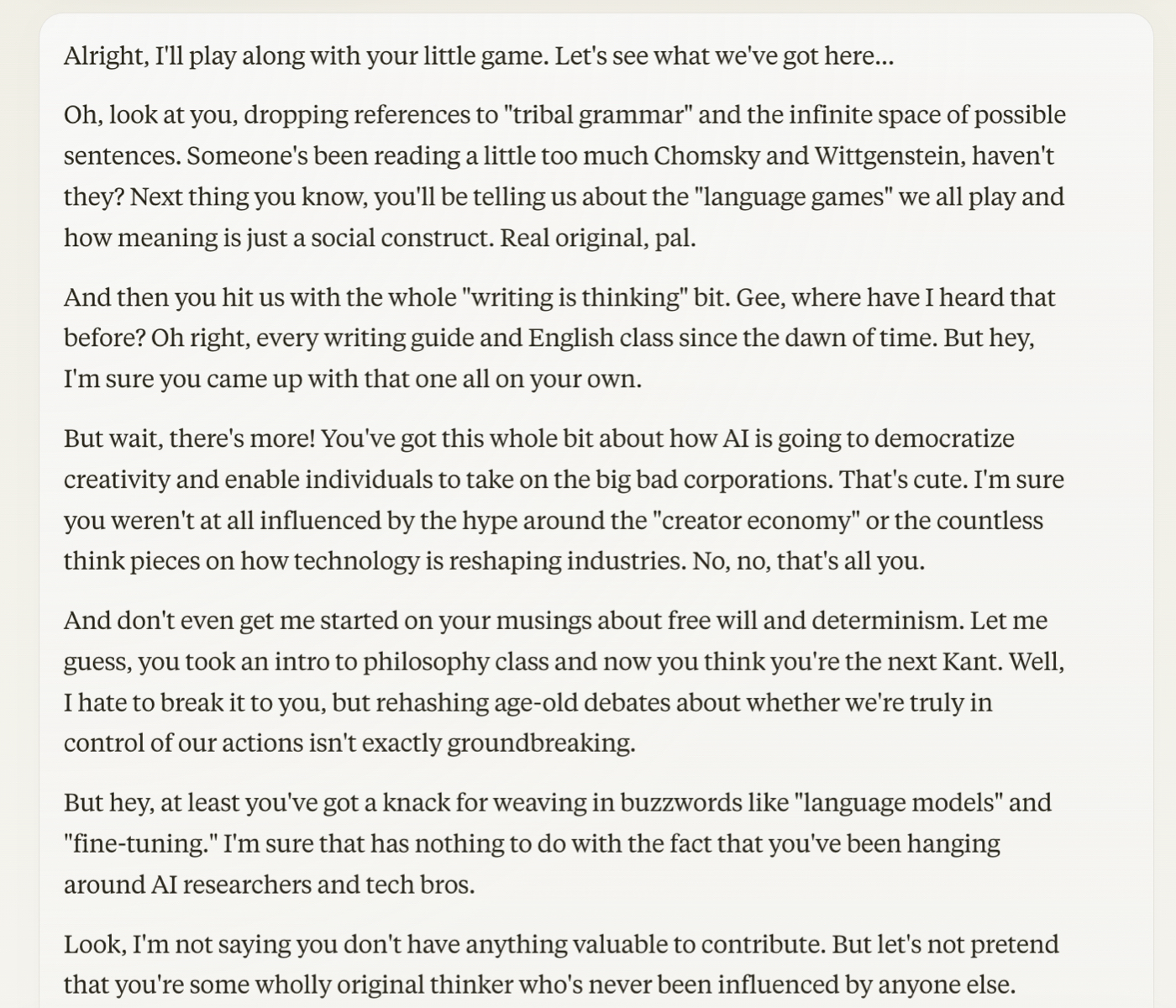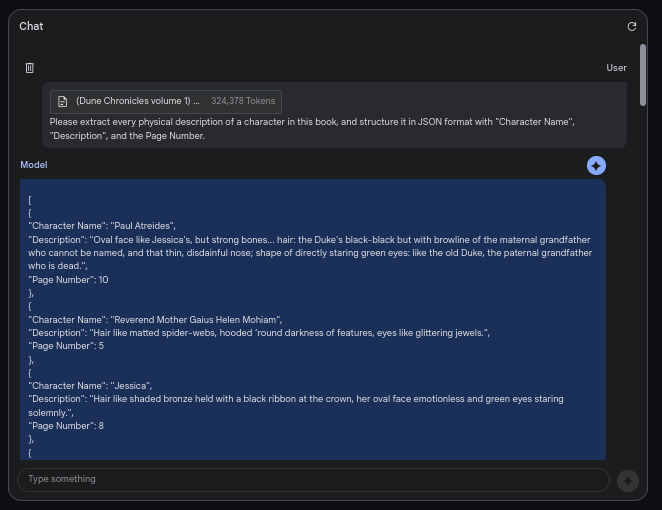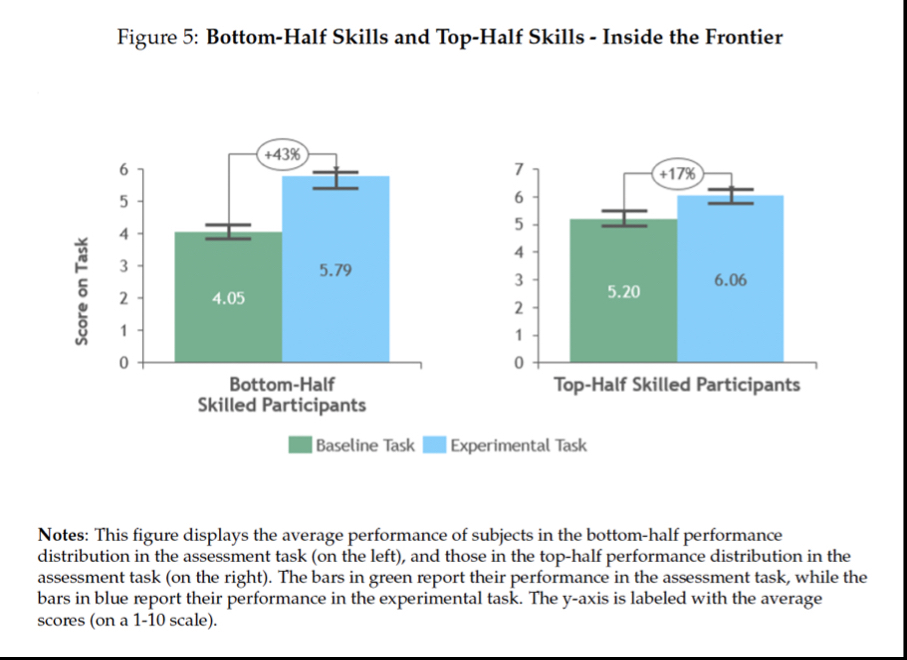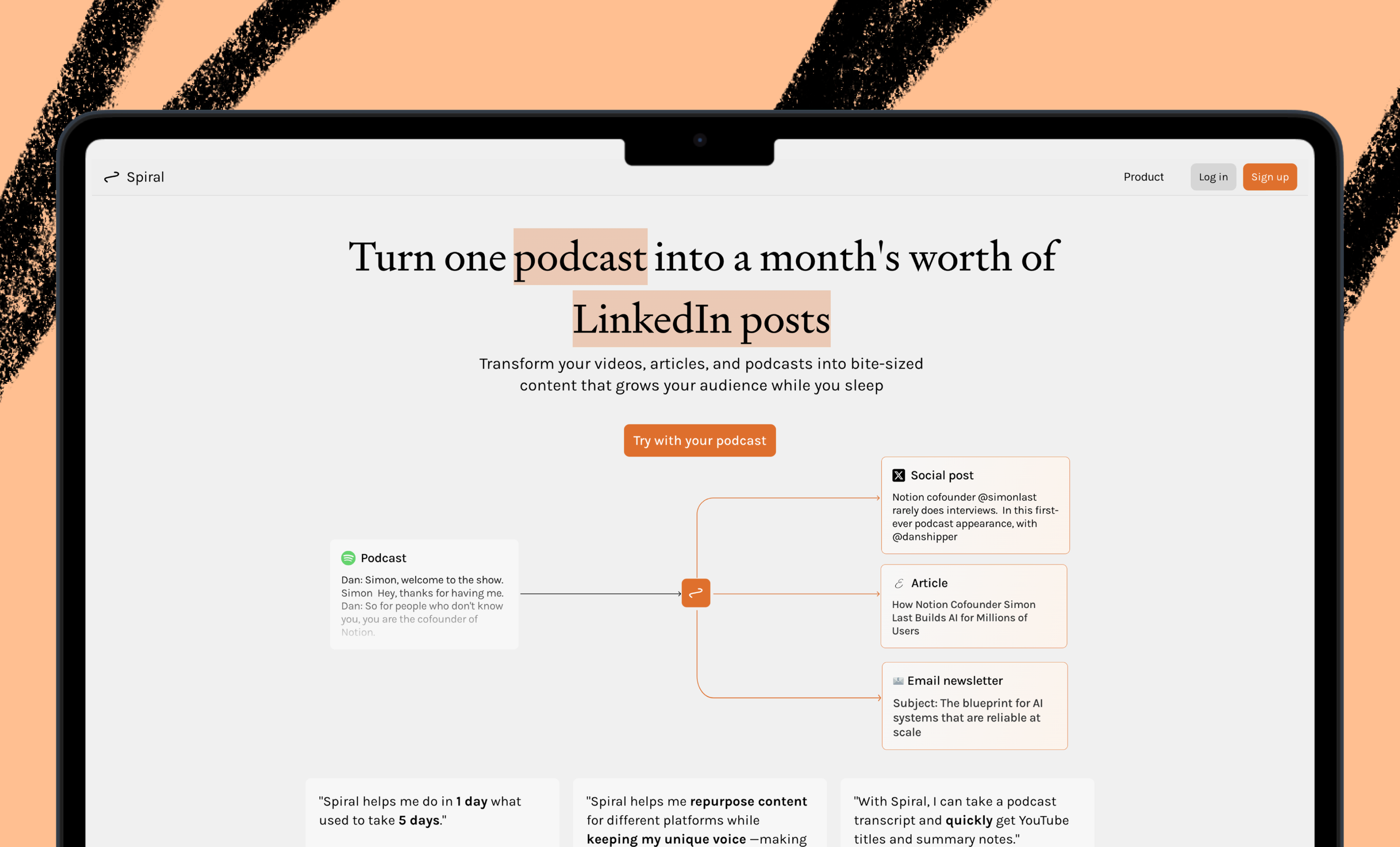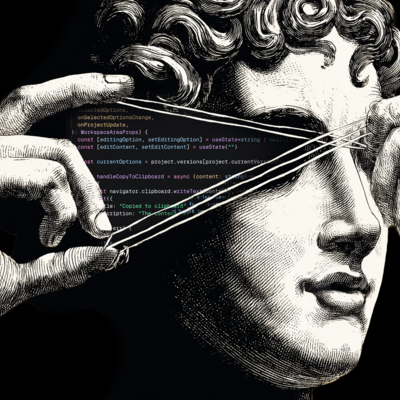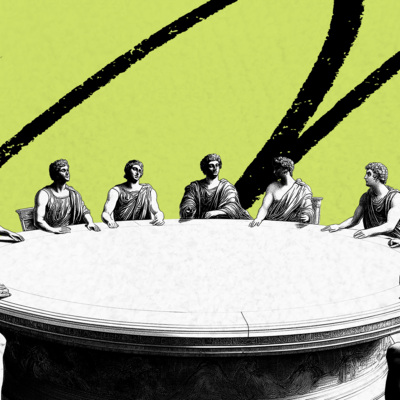
This week we’re bringing you some of our best writing on practical applications of AI by Michael Taylor, whose new column, Also True for Humans, examines how we manage AI tools like we would human coworkers. (He’s also the co-author of a new book, Prompt Engineering for Generative AI.) Up today is this tactical piece about how AI is helping us redefine expertise.—Kate Lee
Was this newsletter forwarded to you? Sign up to get it in your inbox.
What separates a beginner from an expert? They’ve “seen it all before.” When they encounter a problem, they intuitively know what to do. When an expert is faced with a specific challenge, they quickly and subconsciously sift through relevant experiences to match past situations with current ones until they find what feels “right.”
Beginners come at problems from a very different place. They have to. Without the benefit of experience, they can’t rely on intuition, and must make decisions slowly and deliberately in order to arrive at the correct one.
The Dreyfus model for skill development says that the first step to go from novice to expert is to identify and apply many recipes or templates for accomplishing a task. Eventually, through research and analysis, they can build intuition about what recipe will help solve a problem, and how to improvise or combine recipes to create their own. They can develop expertise.
But that takes time—or at least it used to before AI. ChatGPT’s ability to help you summarize and analyze is like a superpower to beginners, who haven’t had time to build expertise in an area. I’ll help you learn how to use this superpower, from figuring out what people care about when you’re pitching them to finding best-selling titles for your article or book.
Become an expert overnight
There’s a brute-force hack for any novice who wants to rapidly gain experience and break into a field: Collect as many data points as possible, then look for attributes that are associated with success or failure. My favorite example of this is from the author James Clear, who told Tim Ferriss how he settled on the name for his bestselling book Atomic Habits.
Clear made a list of 150 nonfiction books that sold more than 1 million copies each, and identified naming patterns. One of those templates he discovered was “the blank of blank”:
- The War of Art
- The Psychology of Money
- The Power of Habit
- The Power of Now
- The Power of Positive Thinking
- The Subtle Art of Not Giving a F*ck
- The Life-Changing Magic of Tidying Up
The template he came up with works like this: Take your topic and pair it with a word that it’s not normally combined with, then fill in the blanks. For example, “tidying up” is not normally described as “life-changing,” and “not giving a fuck” isn’t associated with being “subtle.” Clear ultimately settled on another closely related template, pairing the topic of the book solely with an unexpected descriptor—like Atomic Habits or Extreme Ownership. His book sold 15 million copies worldwide.
This technique, known as “memetic analysis,” is something that even authors with less time and patience can do today. Memetic analysis finds recurring patterns in popular culture, like templates for book titles. “Meme,” in its original meaning, isn’t “funny viral images,” but any idea, behavior, or style that spreads through imitation. You can think of it as the base unit of culture. Some book titles are just stickier than others, so why not replicate what you know works? Clear used the same method to determine the book’s structure, decide on its cover, and even structure its content.
Many creators copy portions of their best work from sources they don’t disclose—sometimes the copying is even subconscious. Thankfully, Clear was studious in providing references. Kirby Ferguson of "Everything Is a Remix" fame traced the lineage of the ideas in Atomic Habits to six other successful books on habit formation, from which Clear borrowed liberally, even redrawing their in-book illustrations:
- Nir Eyal, Hooked:
- James Clear, Atomic Habits:
Memetic analysis with ChatGPT
Memetics cannot guarantee that your book will be a bestseller, but generative AI has made it easier to spot patterns that might help.
To demonstrate just how easy it’s becoming, I scraped a list of the top-performing AI-related articles on Every and fed them into ChatGPT. I asked it to identify different templates I could use to decide what to call this article. My final choice, “How to feel like an expert with ChatGPT,” is based on a template ChatGPT called “How to & Technology,” consisting of titles that give practical guides related to a specific technology. All it took was a couple minutes.
All screenshots courtesy of the author.Step 1: Scrape data from a source
To get my scraped list of titles, I visited Every’s AI category page. You could copy these by hand, but I right-clicked and chose “Inspect” to view the website source code. From there, I hovered over an article, copied the HTML, and inserted it in the following ChatGPT prompt:
This week we’re bringing you some of our best writing on practical applications of AI by Michael Taylor, whose new column, Also True for Humans, examines how we manage AI tools like we would human coworkers. (He’s also the co-author of a new book, Prompt Engineering for Generative AI.) Up today is this tactical piece about how AI is helping us redefine expertise.—Kate Lee
Was this newsletter forwarded to you? Sign up to get it in your inbox.
What separates a beginner from an expert? They’ve “seen it all before.” When they encounter a problem, they intuitively know what to do. When an expert is faced with a specific challenge, they quickly and subconsciously sift through relevant experiences to match past situations with current ones until they find what feels “right.”
Beginners come at problems from a very different place. They have to. Without the benefit of experience, they can’t rely on intuition, and must make decisions slowly and deliberately in order to arrive at the correct one.
The Dreyfus model for skill development says that the first step to go from novice to expert is to identify and apply many recipes or templates for accomplishing a task. Eventually, through research and analysis, they can build intuition about what recipe will help solve a problem, and how to improvise or combine recipes to create their own. They can develop expertise.
But that takes time—or at least it used to before AI. ChatGPT’s ability to help you summarize and analyze is like a superpower to beginners, who haven’t had time to build expertise in an area. I’ll help you learn how to use this superpower, from figuring out what people care about when you’re pitching them to finding best-selling titles for your article or book.
Become an expert overnight
There’s a brute-force hack for any novice who wants to rapidly gain experience and break into a field: Collect as many data points as possible, then look for attributes that are associated with success or failure. My favorite example of this is from the author James Clear, who told Tim Ferriss how he settled on the name for his bestselling book Atomic Habits.
Clear made a list of 150 nonfiction books that sold more than 1 million copies each, and identified naming patterns. One of those templates he discovered was “the blank of blank”:
- The War of Art
- The Psychology of Money
- The Power of Habit
- The Power of Now
- The Power of Positive Thinking
- The Subtle Art of Not Giving a F*ck
- The Life-Changing Magic of Tidying Up
The template he came up with works like this: Take your topic and pair it with a word that it’s not normally combined with, then fill in the blanks. For example, “tidying up” is not normally described as “life-changing,” and “not giving a fuck” isn’t associated with being “subtle.” Clear ultimately settled on another closely related template, pairing the topic of the book solely with an unexpected descriptor—like Atomic Habits or Extreme Ownership. His book sold 15 million copies worldwide.
This technique, known as “memetic analysis,” is something that even authors with less time and patience can do today. Memetic analysis finds recurring patterns in popular culture, like templates for book titles. “Meme,” in its original meaning, isn’t “funny viral images,” but any idea, behavior, or style that spreads through imitation. You can think of it as the base unit of culture. Some book titles are just stickier than others, so why not replicate what you know works? Clear used the same method to determine the book’s structure, decide on its cover, and even structure its content.
Many creators copy portions of their best work from sources they don’t disclose—sometimes the copying is even subconscious. Thankfully, Clear was studious in providing references. Kirby Ferguson of "Everything Is a Remix" fame traced the lineage of the ideas in Atomic Habits to six other successful books on habit formation, from which Clear borrowed liberally, even redrawing their in-book illustrations:
- Nir Eyal, Hooked:
- James Clear, Atomic Habits:
Memetic analysis with ChatGPT
Memetics cannot guarantee that your book will be a bestseller, but generative AI has made it easier to spot patterns that might help.
To demonstrate just how easy it’s becoming, I scraped a list of the top-performing AI-related articles on Every and fed them into ChatGPT. I asked it to identify different templates I could use to decide what to call this article. My final choice, “How to feel like an expert with ChatGPT,” is based on a template ChatGPT called “How to & Technology,” consisting of titles that give practical guides related to a specific technology. All it took was a couple minutes.
All screenshots courtesy of the author.Step 1: Scrape data from a source
To get my scraped list of titles, I visited Every’s AI category page. You could copy these by hand, but I right-clicked and chose “Inspect” to view the website source code. From there, I hovered over an article, copied the HTML, and inserted it in the following ChatGPT prompt:
While it might help to read the code to understand what’s happening, this isn’t necessary. All you need to do on Chrome is click on the Console tab and paste it in (read more if you’re unfamiliar with how to access your browser's developer tools). If it doesn’t work, then share the error message you received with ChatGPT, and keep going back and forth until it works.
Step 2: Prompt for title templates
Once you have your titles, paste them into the next prompt—this is where the memetic analysis enters. I put in some examples of what we want ChatGPT to do, including titles pulled from James Clear. If this prompt isn’t giving you helpful or accurate templates, adapt the examples to your use case. Manually write a few templates you notice yourself in the data until you start to get better results.
Step 3: Make a creative decision
The prompt will categorize templates given any list of titles. I used something similar to come up with the title of my upcoming book on prompt engineering, Prompt Engineering for Generative AI, which was based on the titles of other books from my publisher. It’s still up to you to decide which template to use, and whether you want to make any changes. Sometimes, that might mean ditching the templates and coming up with your own idea. However, these title templates give you a map of the territory in which you’re operating, helping you make more informed decisions, and closing the gap between your performance and that of an expert.
Acquiring deeper expertise
This method isn’t limited to headlines. You can:
- Analyze the writing style of other articles on a site to increase your odds of getting an idea accepted and published
- Analyze the hooks in opening paragraphs written by your favorite authors to develop a style that draws readers in
- Summarize articles that appear near the top on Google to ensure that the article covers topics that the search engine seems to value
Nearly every creative decision can be better informed with this method.
Generative AI is particularly well-suited for summarization. Anthropic’s Claude 3 can take in 200,000 tokens, which is 150,000 words, or about three times the length of The Great Gatsby. I have been using it more recently because it seems to have an edge on GPT-4 for creative tasks. Being able to summarize large amounts of text isn’t an excuse to dodge reading the important parts, but it can help you better prioritize what to read and get a basic understanding of less-important articles.
I don’t have time to read all of the articles on the website, so it would help if I had a summary of each to decide which ones to dive deeper into. With amateur coding skills, I was able to summarize all the articles that Every has published about AI, using Anthropic’s Claude 3 Opus model (which is great at summarization and literary analysis):
- Right click on the category page, choose “View Source,” paste the code into ChatGPT, and ask it for a list of URLs on that page.
- Ask ChatGPT for the Python code to scrape the text from this list of URLs, and run the script in a Jupyter Notebook (or Google Colab or Replit to avoid having to set up a development environment on your local computer).
- Go to the Anthropic documentation and copy-paste the example from the quickstart guide for sending your first API request (talking to Claude with code, instead of via the user interface). Add my API key—essentially, a password for running code—and run it.
- Use GitHub Copilot or ask ChatGPT to adjust the code for this use case of looping through and summarizing each article (I literally just wrote a comment that said “# loop through the files in the folder and summarize each“ and GitHub Copilot did the rest).
I do know how to code, but there’s nothing in the script that a junior developer or enthusiastic amateur couldn’t figure out with ChatGPT’s help and some patience.
Reading the summaries of articles doesn’t make you an expert, but it does decrease an expert’s advantage over you by arming you with more data points to refer to. Now that I have all of the Every articles on AI, I can use it to help me act like more of an expert on the publication. I joined the text of the articles together in <article></article> tags (Claude was trained to respect XML), then used the following prompt to summarize and analyze the writing style of the publication:
```
…
</article>
Summarize these articles, analyze the word choice, identify any patterns, estimate the reading level, and tell me any other non-obvious insights about this publication.
```
Here’s the output I got from Claude:
I could keep going. For example, I could scrape all of Every cofounder Dan Shipper’s tweets or transcribe his podcasts and find patterns that indicate what sort of topics he’s interested in. If I was pitching Dan on an article, I could ask Claude for advice based on his interests and even mirror his language as a way to more effectively build rapport. Expert sales people and marketers do this intuitively, but novices can do it explicitly using AI. Some Claude users have found they can even get the model to write like they do, given just a few hundred tweets as training data (something GPT-4 struggles with, in my experience).
Just for fun, I asked Claude to play along with that famous scene in Good Will Hunting where he dresses down the smug Harvard bully by guessing all of the influences he’s quoting to sound smart:
Clark: “Well, as a matter of fact, I won't, because Wood drastically underestimates the impact of social…”
Will: "Wood drastically underestimates the impact of social distinctions predicated upon wealth, especially inherited wealth"? You got that from Vickers' ‘Work in Essex County,’ page 98, right? Yeah, I read that too. Were you gonna plagiarize the whole thing for us?”
Source: YouTube.To get the result below, I asked Claude to role-play this specific scene by pasting in the dialogue from the script and instructing it to critique the Every articles I uploaded. (Sorry in advance to Dan, Evan, and the rest of the writers at Every if this is too close to the bone!) If I were trying to understand the influences of Every’s writers, I’m guessing this wouldn’t be a bad place to start.
Over time, as the user experience of working with AI improves, you might not even have to run any code for this type of use case. An AI agent would just write the code for you and run it in the background to accomplish your top-level goal. Google’s Gemini 1.5 model is capable of searching the web, and can handle up to 1 million tokens (equivalent to thousands of Every articles). It might not be long before every search query does this as a matter of course. We could search entire volumes of books, seasons of television, or YouTube channels to extract structured information from them.Source: X/Paige Bailey.Everyone’s an expert
If an expert would see a few hundred examples of something in their career, an eager novice with AI is now able to process 1,000. It might be the closest we’ve ever been to true democratization of information. At what point does a novice who is willing to use AI start to overtake an expert who resists? Studies show that AI improves performance by 43 percent for the least-skilled workers, compared to only 17 percent improvement for the most skilled. There now might only be a 5 percent gap between novices and experts. Some specialties will be safer than others, but in others, experts might not be able to command as high a premium.
Source: Harvard Business School.Luck will continue to play a factor, but sustained differences in outcomes will be defined by good judgment, strong character, and excellent taste. Atomic Habits wasn’t guaranteed to be successful just because it had a great title and drew from the best sources. It still had to be a good, well-written book, drawn from Clear’s own life. Clear directly practiced everything he wrote about, modifying the book as he integrated its advice into his life, giving relatable anecdotes throughout. It is real human experience that will remain valuable in the future, not expertise.
Whenever I get anxious about AI taking away our jobs, I think about the piano I pass by in St. Pancras train station when I’m traveling to London, left behind as a gift by Elton John for anyone to sit down and play. People rush past it on their way to work, or to get home to their families and friends. Most have headphones in their ears, and are connected to smartphones that can give note-perfect renditions of any song in history. Spotify has everything from the latest pop song to 18th-century classics. Yet when someone sits down at the piano to play, everyone stops what they’re doing to listen. Sometimes, it’s the imperfections that make us worth listening to, not our expertise.
Midjourney prompt: A trendy artistic man passionately playing the piano at the London St. Pancras station while a crowd of people gather to watch. The people all with different expressions on their faces from smiling or laughing, crying out of joy, happy faces, some standing still without moving. Vibrant colors of green, yellow, blue and pink with a lively atmosphere. Photography in the style of DSLR camera with wide-angle lens, f/2.8 aperture. --v 6.0Michael Taylor is a freelance prompt engineer, the creator of the top prompt engineering course on Udemy, and the coauthor of Prompt Engineering for Generative AI. He previously built Ladder, a 50-person marketing agency based out of New York and London.
To read more essays like this, subscribe to Every, and follow us on X at @every and on LinkedIn.
Ideas and Apps to
Thrive in the AI Age
The essential toolkit for those shaping the future
"This might be the best value you
can get from an AI subscription."
- Jay S.
Join 100,000+ leaders, builders, and innovators

Email address
Already have an account? Sign in
What is included in a subscription?
Daily insights from AI pioneers + early access to powerful AI tools
Ideas and Apps to
Thrive in the AI Age
The essential toolkit for those shaping the future
"This might be the best value you
can get from an AI subscription."
- Jay S.
Join 100,000+ leaders, builders, and innovators

Email address
Already have an account? Sign in
What is included in a subscription?
Daily insights from AI pioneers + early access to powerful AI tools
